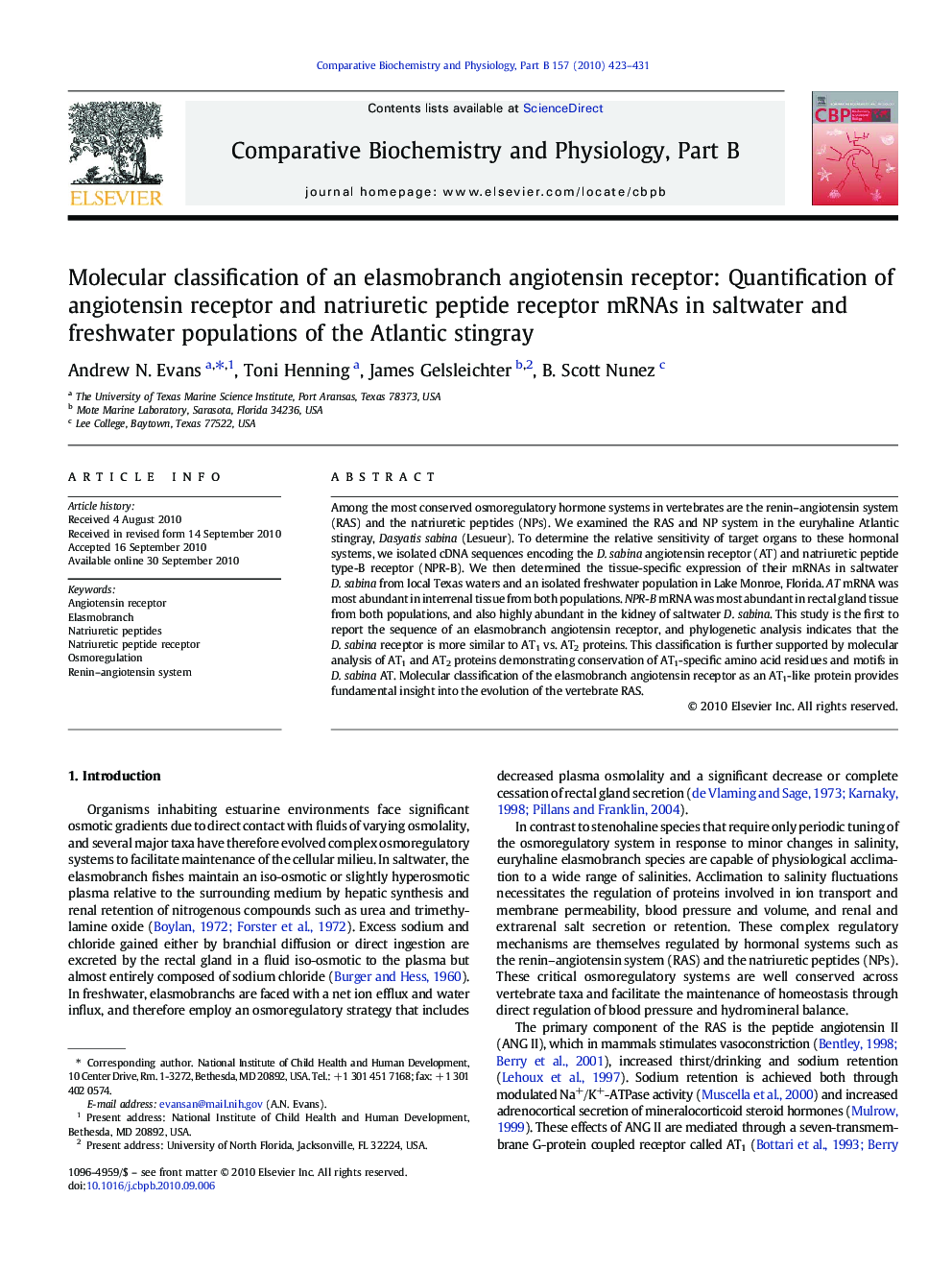| Article ID | Journal | Published Year | Pages | File Type |
|---|---|---|---|---|
| 1975680 | Comparative Biochemistry and Physiology Part B: Biochemistry and Molecular Biology | 2010 | 9 Pages |
Abstract
Among the most conserved osmoregulatory hormone systems in vertebrates are the renin-angiotensin system (RAS) and the natriuretic peptides (NPs). We examined the RAS and NP system in the euryhaline Atlantic stingray, Dasyatis sabina (Lesueur). To determine the relative sensitivity of target organs to these hormonal systems, we isolated cDNA sequences encoding the D. sabina angiotensin receptor (AT) and natriuretic peptide type-B receptor (NPR-B). We then determined the tissue-specific expression of their mRNAs in saltwater D. sabina from local Texas waters and an isolated freshwater population in Lake Monroe, Florida. AT mRNA was most abundant in interrenal tissue from both populations. NPR-B mRNA was most abundant in rectal gland tissue from both populations, and also highly abundant in the kidney of saltwater D. sabina. This study is the first to report the sequence of an elasmobranch angiotensin receptor, and phylogenetic analysis indicates that the D. sabina receptor is more similar to AT1 vs. AT2 proteins. This classification is further supported by molecular analysis of AT1 and AT2 proteins demonstrating conservation of AT1-specific amino acid residues and motifs in D. sabina AT. Molecular classification of the elasmobranch angiotensin receptor as an AT1-like protein provides fundamental insight into the evolution of the vertebrate RAS.
Keywords
Related Topics
Life Sciences
Biochemistry, Genetics and Molecular Biology
Biochemistry
Authors
Andrew N. Evans, Toni Henning, James Gelsleichter, B. Scott Nunez,
